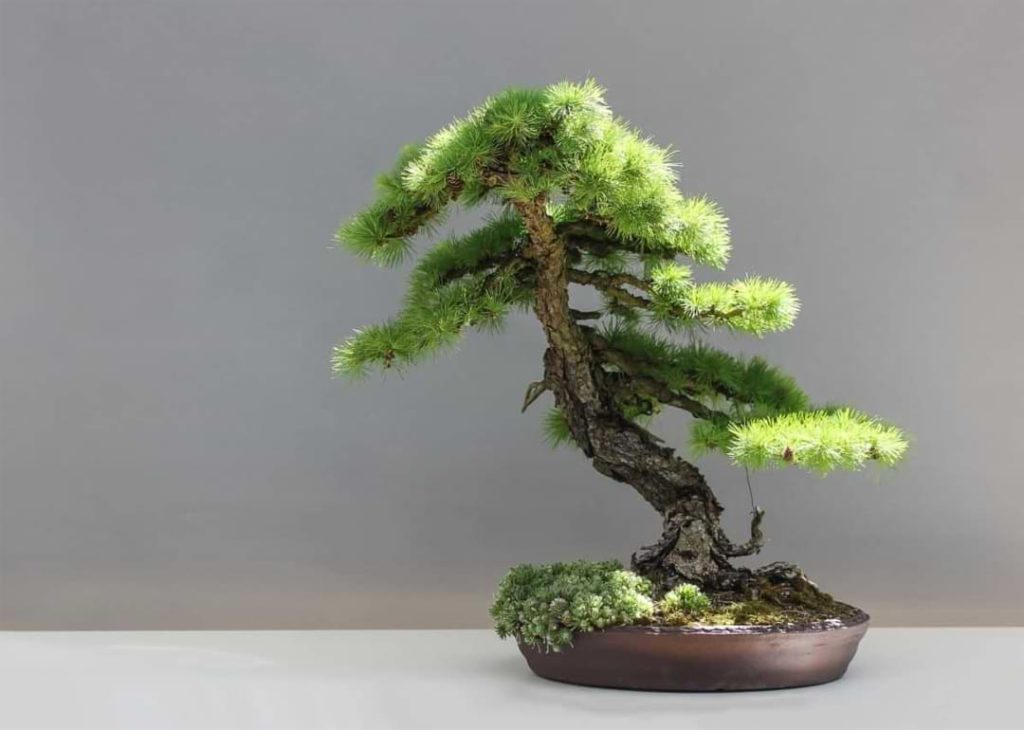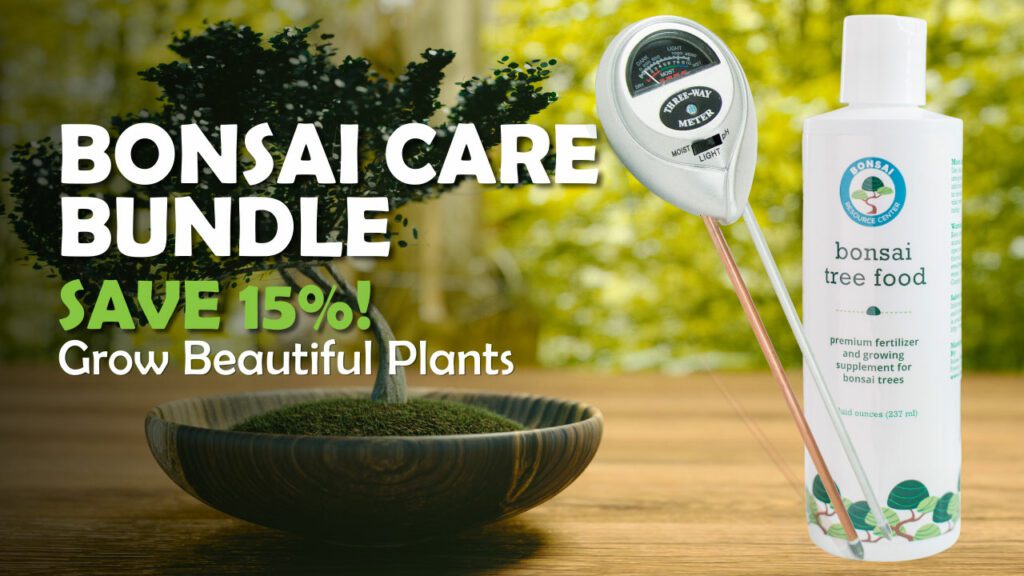A Quick Guide to Caring for 4 Novice-Friendly Varieties
When you’re just getting started with bonsai, it can seem like the list of things your need to learn is endless. Luckily, there are a few popular bonsai tree types that make getting started easy! This quick guide to common, novice-friendly varieties will help you pick your perfect bonsai and give it the care it needs to thrive.
1. Ficus Bonsai Tree Types
There’s a reason ficus trees are the quintessential beginner’s bonsai: these resilient trees are tolerant to rookie mistakes like low humidity or too little sunlight. Because they easily grow gnarled limbs and often sprout hanging aerial roots, they’re great starter trees for growers that want to get creative with limited technical know-how.
There are hundreds of different species of ficus trees. Some of the most popular bonsai varieties are Ficus Retusa (Banyan fig) and Ficus Religiosa (Bodhi tree). For the most part, ficus trees of any variety will need similar care, but watch your tree closely and research specific care instructions if needed.
Ficus Bonsai Tree Care
- Positioning: Although they can endure a little light deprivation, ficus bonsai tree types prefer ample sunlight. Find a sunny window and let yours soak up the rays. Warm outside? Ficus can be kept outdoors if the temperatures are over 60ºF and they’re out of the shade.
- Humidity: While ficus trees can tolerate lower humidity levels, you’ll need to provide higher humidity if you want yours to sprout aerial roots. Boost moisture levels with a humidity tray or by misting.
- Water: Ficus trees like their soil to dry out between waterings. When the topsoil is dry, douse generously from above until water leaches out its pot’s drainage holes.
- Pro Tip: Ficus tree branches, roots, and trunks fuse together quite easily. Create visually compelling designs by lightly binding appendages together until they fuse.
2. Juniper Bonsai Tree Types
With over 50 varieties to choose from, gnarled branches, and bark that easily grows into dead wood, the design possibilities are nearly endless with juniper bonsai trees. Tiny needles, easily trainable limbs, and their general resilience make these trees some of the most popular bonsai tree types. With just a little know-how, even the newest growers are sure to grow a visually appealing tree that delights the eye for years to come.
Juniper Bonsai Tree Care
- Positioning: Juniper bonsai aren’t as sun-hungry as other bonsai tree types, but still need to be placed where they can get at least four hours of direct sunlight every day.
- Humidity: Juniper are particularly friendly to misting, which helps create the humidity levels in which these bonsai tree types thrive.
- Water: Because they like to dry out between waterings, juniper trees are great for forgetful growers and frequent travelers. Be aware: While the roots hate to be waterlogged, they’ll still struggle if the soil is too dry for a prolonged period.
- Pro Tip: Some species turn purple in colder weather to protect themselves from the frost, or drop their needles when they go dormant. Don’t panic! They’ll green and grow back in the spring.
3. Fukien Tea Bonsai Tree Types
A tropical evergreen shrub native to several countries in the Eastern Hemisphere, the Fukien Tea bonsai tree is named after its place of origin: Fujian, China. Well-loved for its miniscule white flowers, the Fukien Tea is one of the most popular indoor bonsai tree types. Fukien Tea bonsai are naturally amiable to indoor environments, making them a great pick for new growers looking to bring their practice inside.
Fukien Tea Bonsai Tree Care
- Positioning: Like most bonsai, Fukien Tea love bright sunlight; but they need a little protection from harsh, direct rays. Whether kept indoors or outdoors, they’ll be happiest with a little midday shade.
- Temperature & Humidity: Fukien Tea bonsai thrive at around 70º Fahrenheit. They prefer to be a bit more humid, so consider using a humidity tray if your tree seems like it’s struggling.
- Water: Fukien Tea trees need to be consistently moist, but not damp. If the root ball is allowed to dry completely, the tree will shrivel and die.
- Pro Tip: Fukien Tea bonsai trees have tiny white dots on their dark-green leaves, which are often mistaken for pests. It’s normal, no intervention necessary!
4. Chinese Elm Bonsai Tree Types
Slow-growing and “oopsie”-tolerant, Chinese elm bonsai are great for novice growers still learning the ropes. While these trees can reach up to 60 feet tall in the wild, their small leaves and fine branches make them well-suited for pint-sized growing.
Chinese Elm Bonsai Tree Care
- Positioning: Chinese elm bonsai are hardy enough to grow indoors, but good sunlight is essential. Choose a window that gets ample rays throughout the day for a mix of strong and soft sunlight. Beware of windows that create a greenhouse effect—the extreme temperatures of the midday sun can burn this tree’s delicate foliage.
- Temperature & Humidity: Balance is key with the Chinese elm. These bonsai tree types are most comfortable between 60 and 70º Fahrenheit. While they’re happy outside during warmer weather, make sure to bring them inside once the temperature dips into the 50s. You may consider misting these trees to increase humidity, but they generally tolerate indoor moisture levels nicely.
- Water: Chinese elm like their soil moist but do best when they dry up a bit between waterings. When the top layer of soil is bone-dry, water generously from above until water starts to leach out the drainage holes at the bottom of the pot.
- Pro Tip: Chinese elm trees are semi-deciduous, meaning they may or may not drop their leaves in the colder months. Neither outcome means you’re doing something wrong!
What’s your favorite bonsai tree type? Share your bonsai journey in our Facebook group!
Bonsai With Us!
The Bonsai Resource Center is here to help you learn the best bonsai tree care and provide you with the tools you need to keep your tree healthy and strong. Explore our other articles, visit our online shop, and connect with other bonsai lovers in our Facebook group to learn everything you need to know about this rewarding hobby!
More Bonsai Tree Care Resources
How to Care for Your Bonsai Fruit Tree (and Our Three Favorites!)
The Only Bonsai Tree Care Calendar You’ll Ever Need



